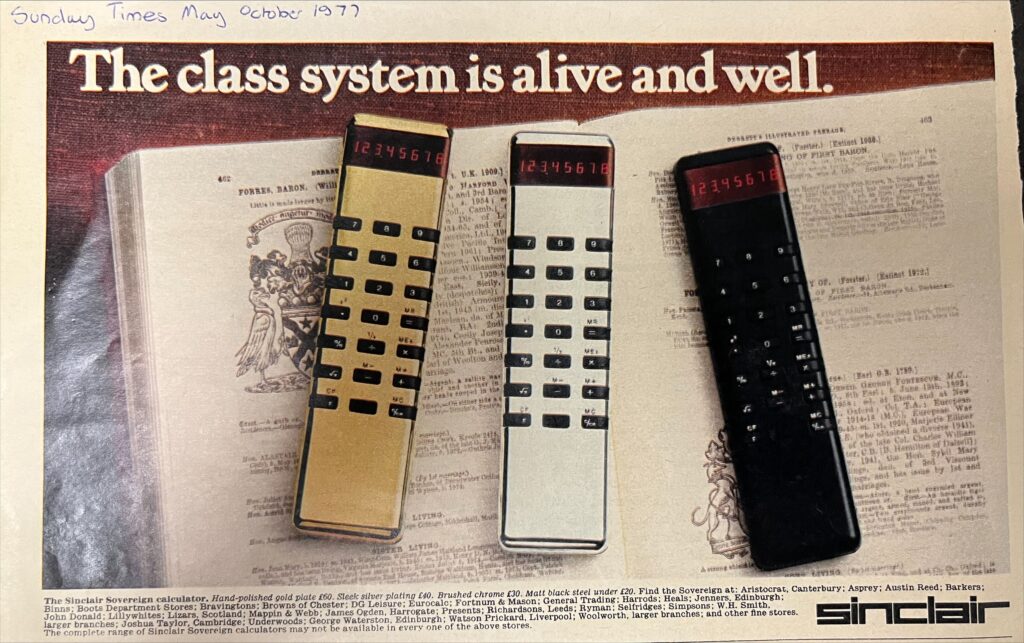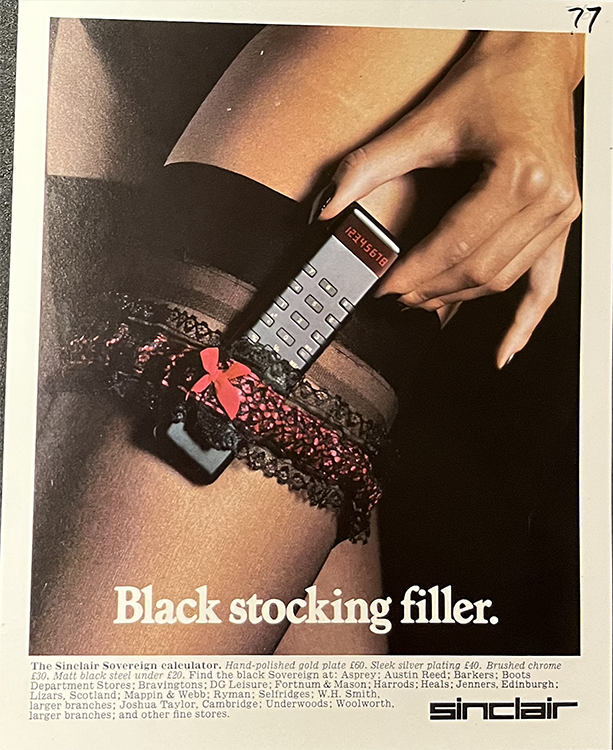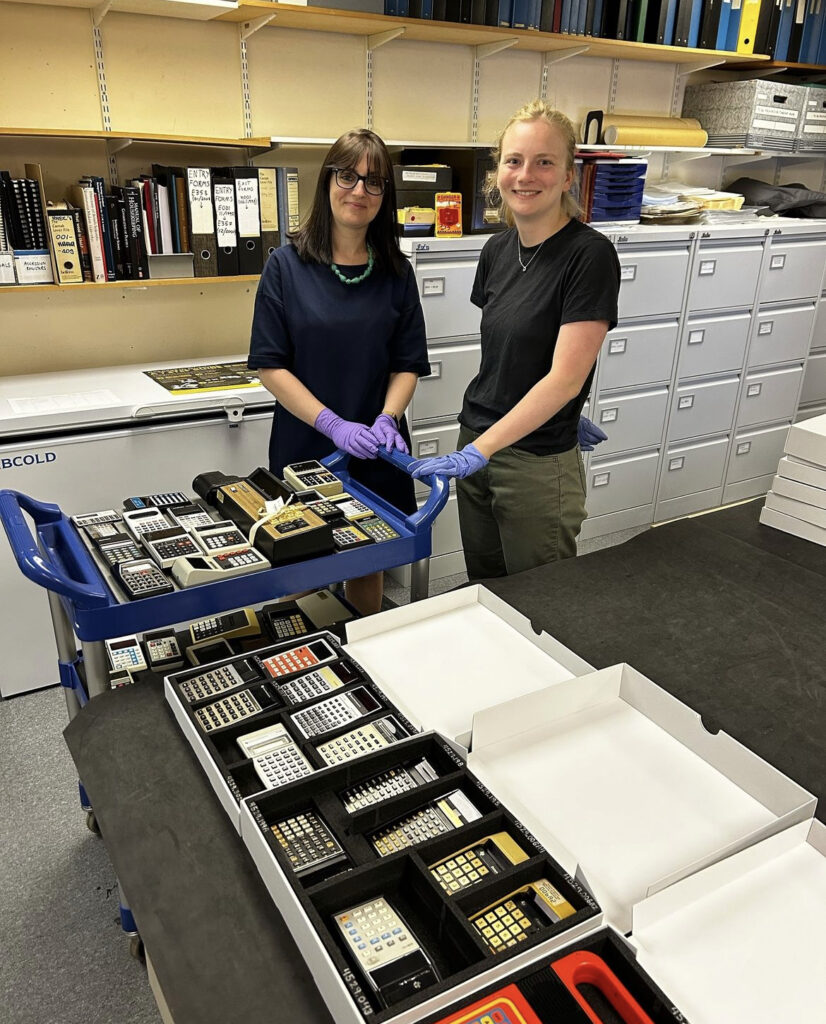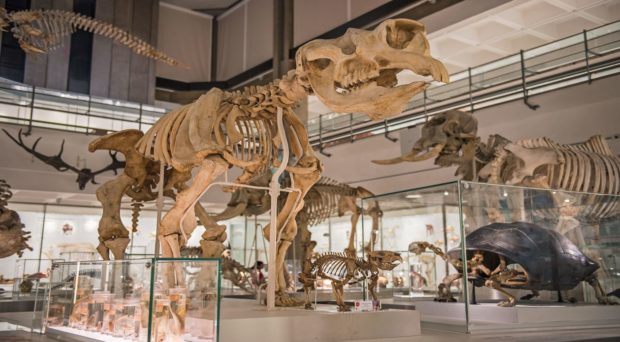The Whipple Museum of the History of Science holds the largest (probably!) collection of electronic handheld calculators in the United Kingdom. This summer, I have had the opportunity to audit, rehouse, and construct a new case of these devices.
Technology has developed so quickly over the past decades that we think of calculators as much as apps on our phones than we do as separate devices in their own right. But even the electronic calculator itself is a relatively recent invention. First developed in the 1960s, they were initially desktop sized. Thanks to technological advancements in screen size and power supplies, the devices were pocket-sized by the early 1970s. In their smaller form, they soon became a part of everyday life. School children and workers alike began to use the devices to complete their work.
Witnessing the increasing popularity of these devices, Francis Hookham, a Cambridge architect, began a collection. Astutely, he believed that the electronic calculator would become an important part of our material history and wanted to assure that it was preserved for future generations to study.

Over the coming years his collection expanded as the number of calculator manufacturers and types grew. By the time he donated his collection to the Whipple Museum in 1988, it included approximately 440 electronic calculators and represented manufacturers from around the world. This donation created an immediate stir. A young Boris Johnson ridiculed the Whipple for accepting the donation, arguing in a Daily Telegraph column that the museum could become a “major tourist attraction for its peerless collection of obsolete gadgets of every kind” (Daily Telegraph, 26 October 1988, clipping in Hookham Archive, Whipple Museum). Yet today, the calculators remain an important part of our collection, popular with visitors and researchers alike – and Hookham himself can be celebrated as a pioneer of contemporary collecting.
While a portion of these devices had been on display in the learning gallery for a number of years, the rest of the collection wasn’t as accessible as it could be for researchers and museum staff due to the way it was packed and stored. Keen to upgrade the storage of the calculators and audit and check how their condition had changed in recent years, the museum advertised a summer intern position.
That’s where I came in! Since the beginning of June, I have been in a big calculator state of mind.

Working closely with Morgan Bell, the Whipple’s Collections Manager, and our conservators, Stephanie and Deborah, we determined what box and plastazote combinations would be the best housing materials for our calculators, which differed greatly in height, width, and depth. This decision-making process involved research into the best housing for plastic materials, which can degrade in very unique ways, and require different forms of ventilation.
Once we settled on our boxes and rehousing protocol, the process of auditing, reviewing, and, finally, placing the calculators in their long-term homes began. Over the weeks, I chipped away at the 440 calculators, identifying those with corrosion, which was frequently on the battery contacts, or foam or plastic degradation. Calculators that had any of these issues were then placed in the hands of our trusty conservators who assessed and treated their ailments.
Through this process, I developed a deep appreciation and fascination (who would ever think I would say that!) with the variety of calculator sizes and appearances. There were small ones and tall ones, shiny ones and very dull ones, ones made for business people and others for school children, there were calculators for language translation, and ones with games. There were even some calculators with very raunchy advertisements.

Slowly but surely, these calculators were placed in their new homes and stored away in our stores, now readily available for any researchers interested in learning more about the development of the calculators now embedded in our phones.
Luckily the Learning Gallery was simultaneously undergoing a major overhaul (as you can read about in this recent blog from Curator Hannah Price.) As part of this refurbishment, the cases in the gallery are being redone to align more closely with our learning programme, led by our Learning Coordinator Alison Giles. These ongoing changes meant that I had the opportunity to put some of Hookham’s fabulous calculator collection on display.
Tasked with creating the new maths and measuring case to accompany Alison’s new session by the same name, I began to compile the top of the case and four drawers. On top of the case one will now find early measuring devices, including a slide rule, a foot measuring device for shoes, an abacus and an original mechanical calculator, among others. And in the four drawers below, visitors can explore four different eras in calculator design. In the first, are the original slide rule calculators and in the second, miniature versions of those devices. The next two drawers include examples of how calculators became increasingly computationally powerful, and, finally, examples of maths learning devices which aimed to make maths learning accessible and fun for children.

While the maths and measuring case has allowed for the display of a few of these calculators, the Whipple is not done yet. In the coming years, we hope to add a calculator wall behind the cases to put more of our collection on display. But for now, the rest of the Hookham Collection are safely housed in their plastazote in our stores ready for anyone who wishes to research with them.
To keep up with our progress in the learning gallery, follow the Museum’s new Instagram account @whipplemuseum and come visit us! When you do, please stop by and fill out our survey to let us know what you think of the changes.







